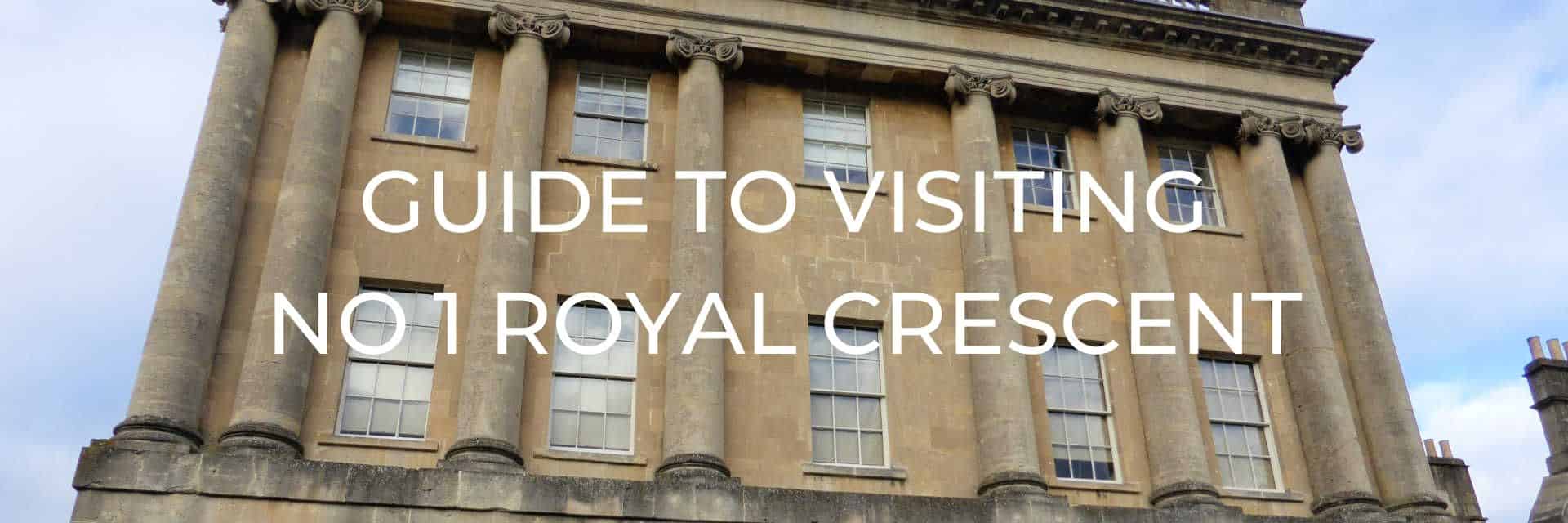
No. 1 Royal Crescent shows visitors what life would have been like for residents and staff in the late 18th-century. The building occupies the right-hand end of the famous Royal Crescent in Bath, England which has been home to many notable people since it was built over two centuries ago.
Want to save this for later? Click the Pinterest button on the left for a pinnable image!
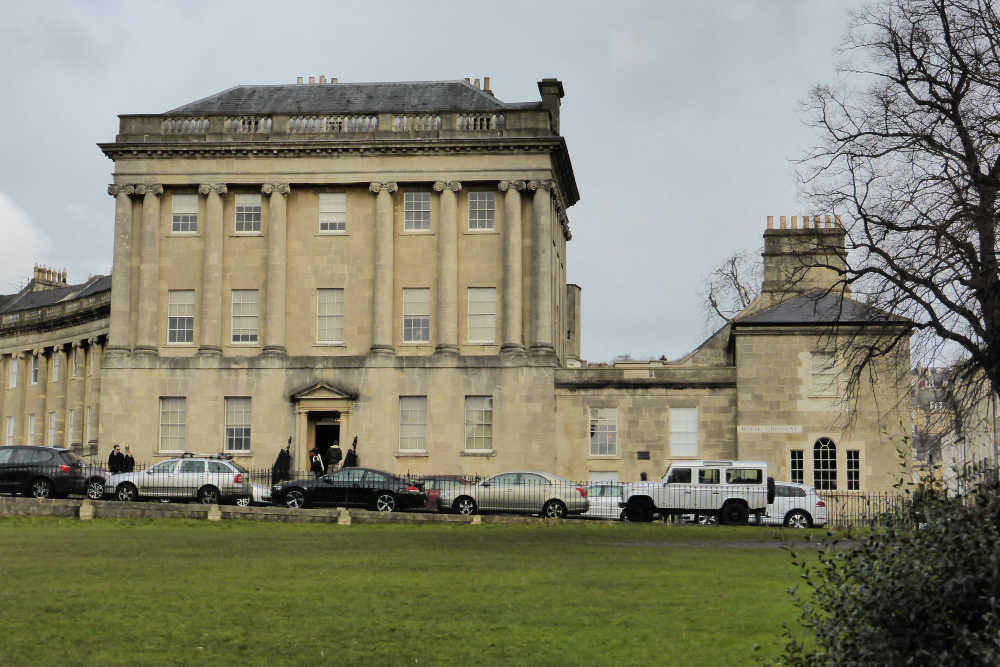
This post may contain affiliate links. Please read our full disclosure policy here.
Originally named the Crescent, the row of terraced houses was built between 1767 and 1774 and the facade still looks much as it would have back then. Original purchasers didn’t buy completed homes, but a length of the facade which they then constructed their own house behind. This means that while the front of the crescent looks uniform, the rear is far more mixed bag of designs.
No. 1 Royal Crescent is one of the cornerstones of the crescent, standing on the very right-hand or eastern side. The first tenant of No. 1 was Thomas Brock who lived there until 1776, the first permanent resident was Henry Sandford, a retired MP, who lived there until his death in 1796. The current set-up of the rooms is based on how the house would have possibly looked during the time Henry Sandford lived there.
The house was purchased by Major Bernard Cayzer in 1967 who donated it to the Bath Preservation Trust. They have restored the house as well as reuniting it with its original servants’ wing (No. 1A) in 2012/3 to show visitors how both the wealthy owners and their staff would have lived over two centuries ago.
READ MORE: Weekend Guide to Bath: 48-Hour Itinerary
HIGHLIGHTS OF NO. 1 ROYAL CRESCENT
Tours of No. 1 are self-guided, but you’ll find staff in the rooms who will explain the various features and answer any questions you might have. Your tour starts with a short introduction by a period-dressed person who introduces you to the home and the time period. Each of the rooms also contains information cards which you are read to get a better idea of what the rooms were used for, special items to notice and stories of some of the people who lived there.
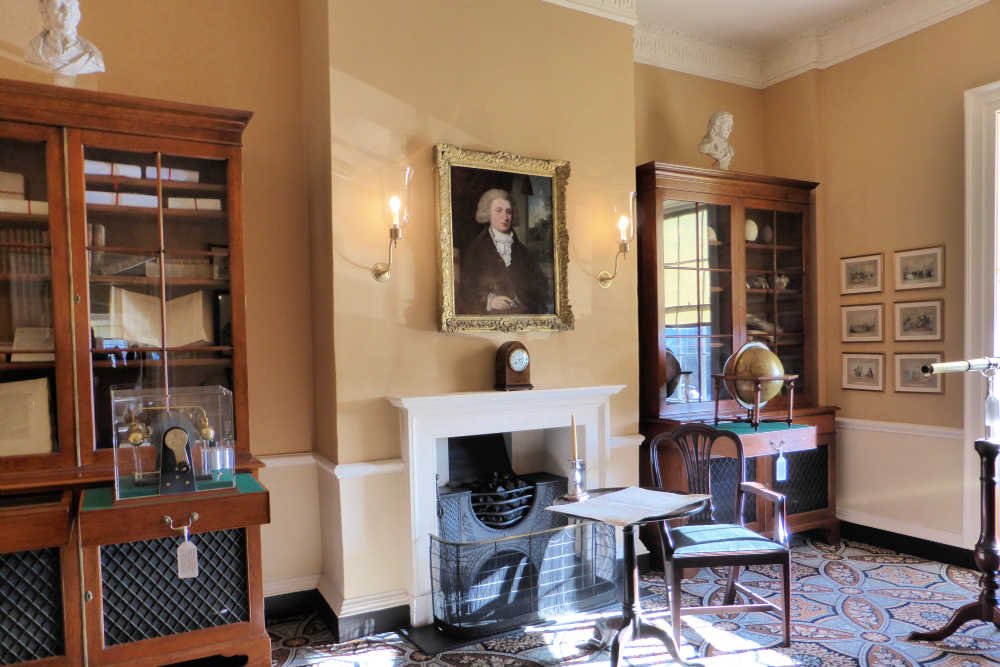
GENTLEMAN’S RETREAT
One of the first rooms on the tour was the very masculine Gentleman’s Retreat. Here a fine Georgian gentleman had a private space where he could indulge in some of his manly pursuits like science, inventions, and the natural world. The 18th century equivalent of today’s “Man Cave”?
Included in this particular gentleman’s retreat were fine display cabinets typical of the 18th-century folk’s obsession with recording knowledge by creating collections. Also in this room were a telescope (with a nice view out across Bath), a globe, and an “electrical machine”, which was a replica of Nairns Patent Electrical Machine used as medical therapy to relieve aches and pains.
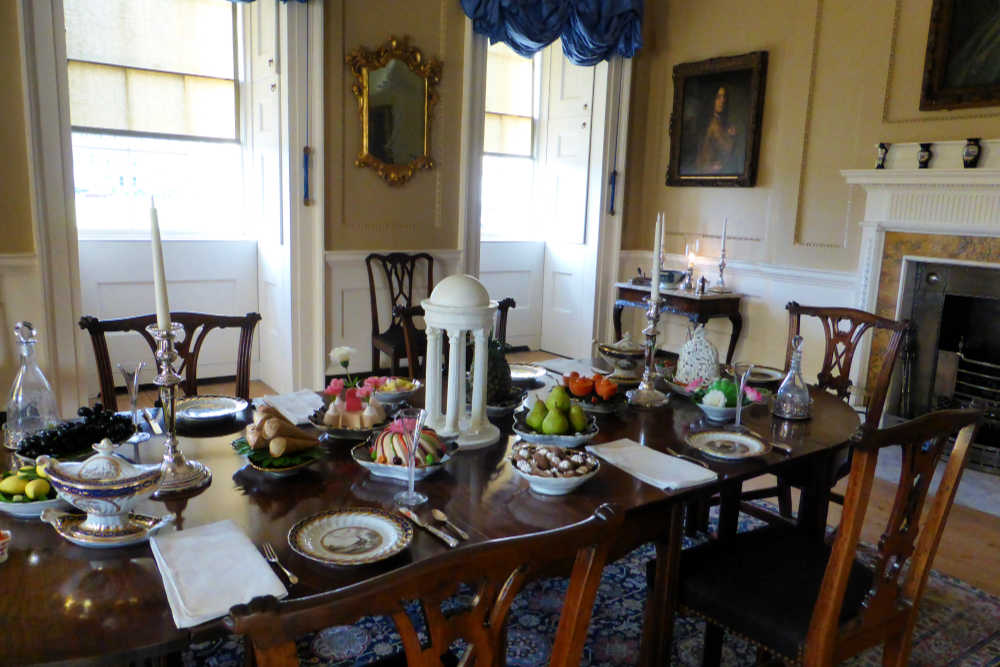
DINING ROOM
This is decorated in a formal, masculine, and sober style to reflect the host’s status in society while entertaining his guests. During an elaborate Georgian dinner, the dessert would have been the high point and the host would have pulled out all the stops to show off his wealth. This particular table was set with Chamberlain Worcester dessert service that displayed expensive confectionery.
As beautiful as the room is, you might be quite surprised to learn what is behind the screen in the corner of the room. If you visit, you must ask the guide.
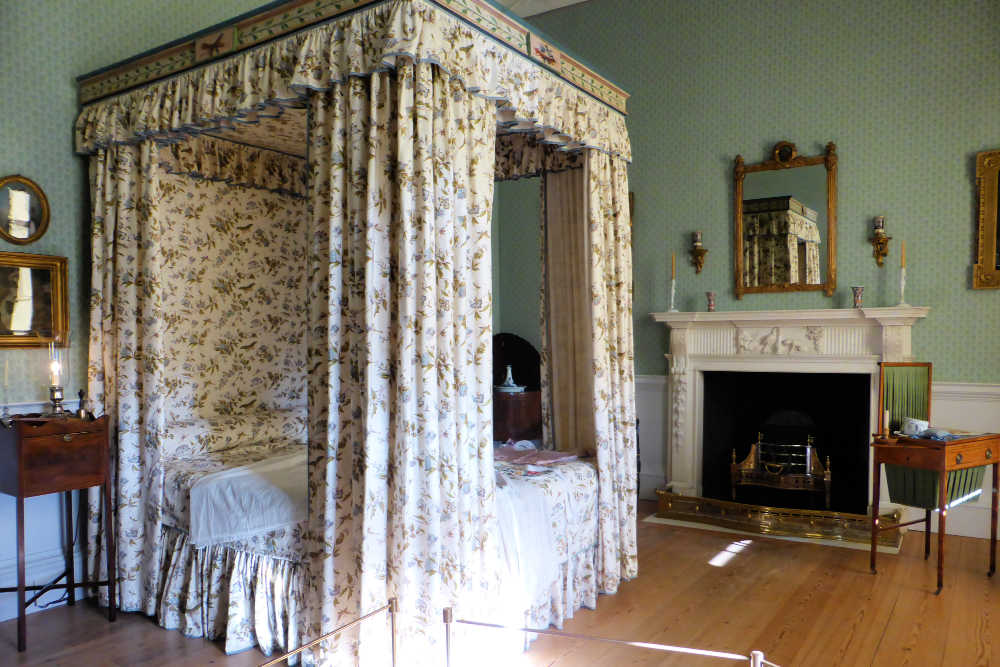
LADY’S BEDROOM
This room was the inner sanctum and private retreat for the lady of the house. She would have slept here and, with the help of her maid, performed her elaborate grooming and dressing rituals. Sometimes she might receive guests in this room that would keep her company during her morning routine.
One thing on the “Not to Miss” list in this room was the wig scratcher which, despite the glamour of the period, was used to relieve ladies from the itch of lice! Really though that was minor compared to all who became ill, and even died, from all the toxic chemicals in the make-up they used.
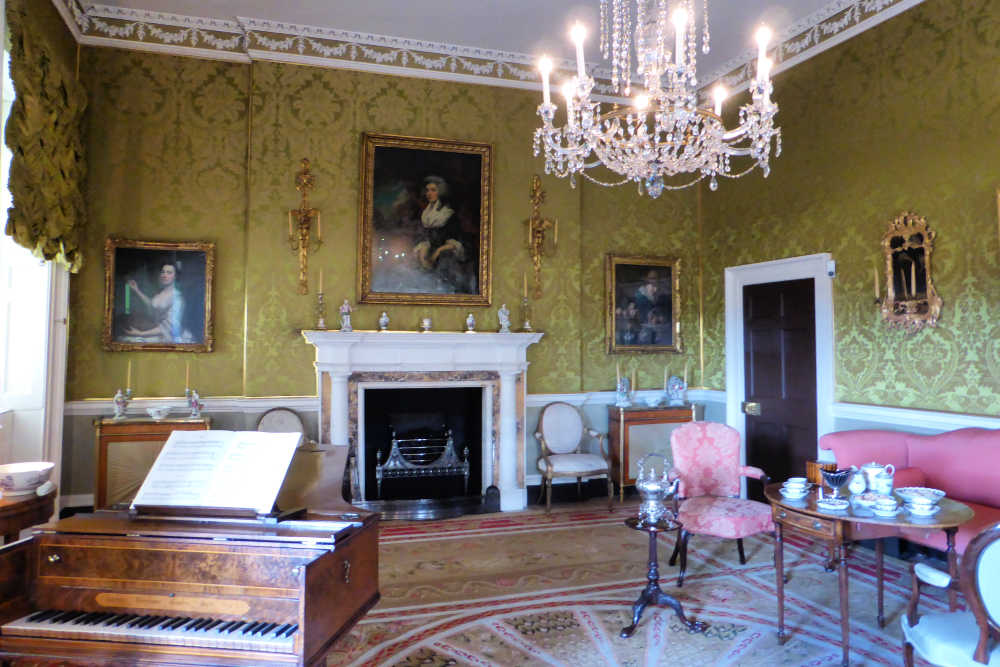
WITHDRAWING ROOM
Very elaborately decorated in a light and feminine style this room would have been used by ladies to take their tea after withdrawing from dinner. Because tea was so expensive in those days it was kept locked in a tea cabinet (there is one in the room) that only the lady of the house would have held the key to so the servants couldn’t help themselves to a taste.
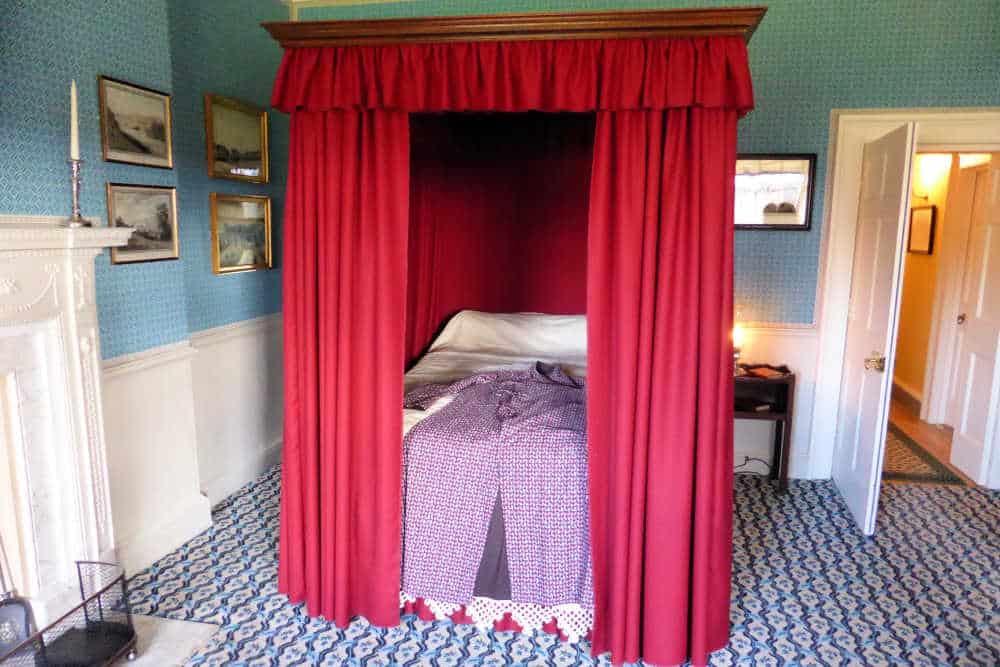
GENTLEMAN’S BEDROOM
The owner of the home that we learned about, Henry Sanford, suffered from poor health, especially after his wife died in 1764. This room would have given him privacy for rest and recuperation from his ailments. It was furnished with George Hepplewhite pieces and included a portable medicine cabinet that Henry was likely to have for all his home remedies.
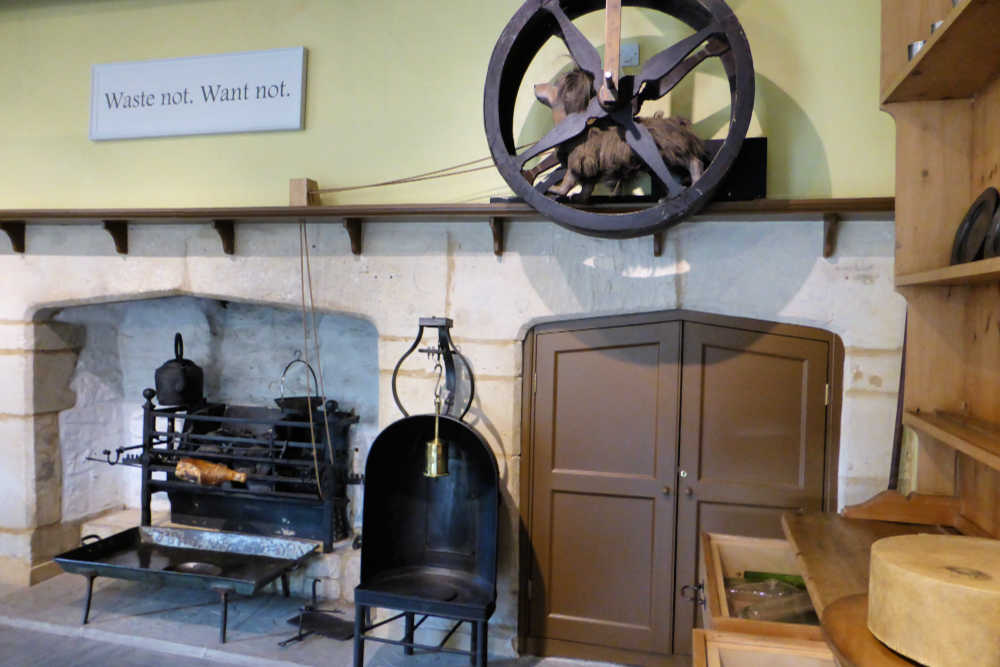
SERVANT’S HALL
This room may make you feel like you had stepped into Downton Abbey life. You can almost hear Mrs. Patmore scolding Daisy for leaving a sauce on the stove too long because of her daydreaming. In this room, the servants would have all eaten together and it included a handy, though not particularly humane, an invention called a Dog Wheel. In this wheel a dog would have walked, and walked, and walked, to turn the cooking spit, but it likely would have been well fed with the kitchen scraps.
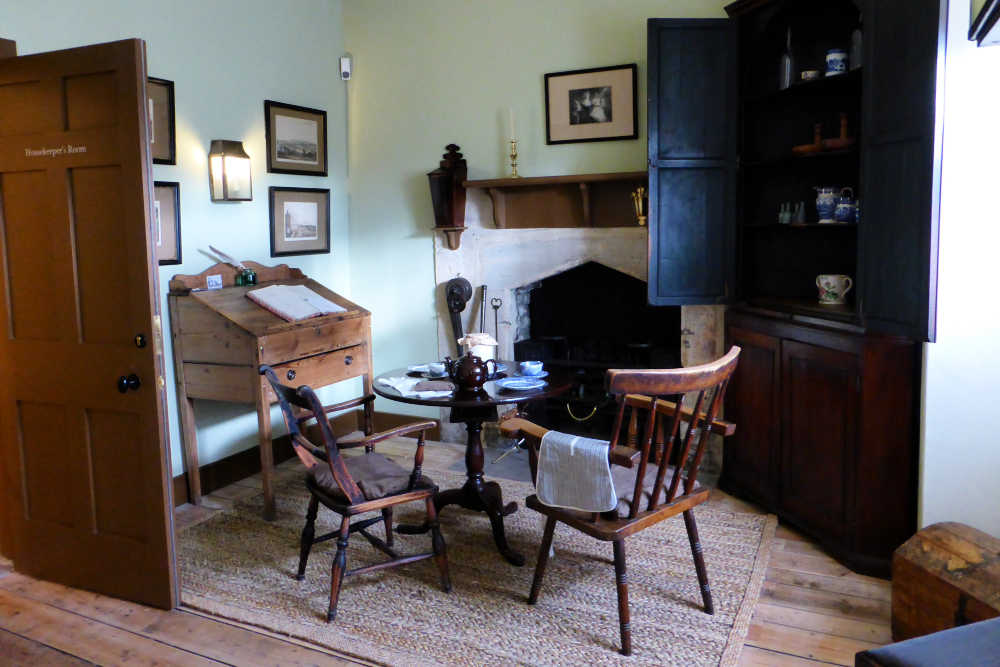
HOUSEKEEPER’S ROOM
Very much a valued and skilled professional, the head housekeeper would have had her own room, like this one, as basically her private office where she organized the household and paid bills. Because of her elevated status above the other servants, she would have dined in here too instead of in the servant’s hall.
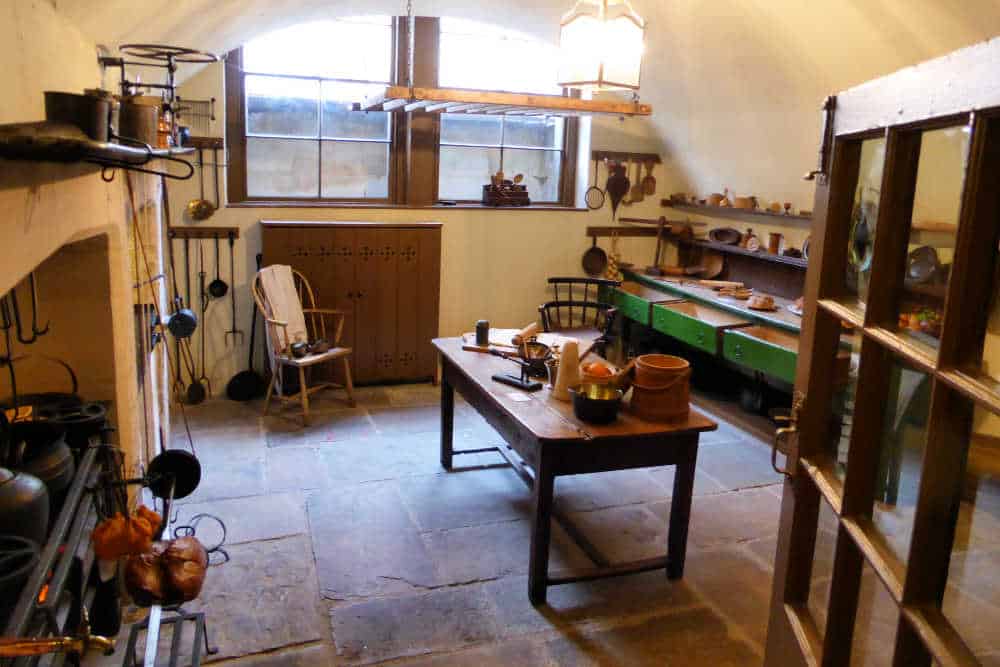
KITCHEN AND SCULLERY
Two other important rooms for the proper running of a fine Georgian home, the kitchen and scullery at No. 1 Royal Crescent are well stocked with tools and foods of the day so we could get a good sense of how they were run.
If you visit you have to lift the iron. One lift and you’ll thank the makers of our modern irons that are so much lighter. They must have had bodybuilder muscles to use those irons every day!
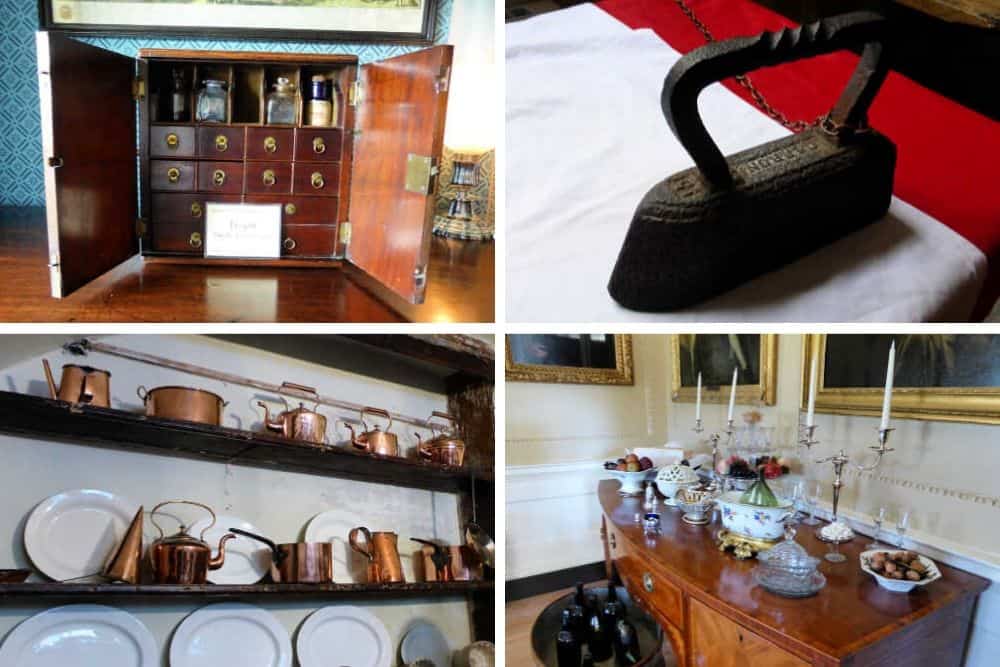
PLAN YOUR VISIT TO NO. 1 ROYAL CRESCENT
Information last updated December 2019
HOW TO GET THERE
No. 1 Royal Crescent can be found at 1 Royal Crescent, Bath BA1 2LR.
The nearest station is Bath Spa (Great Western Mainline) which is a 20-minute walk away, so you might want to take a bus or taxi instead. You catch a bus (6, 7, 20 or 620) from Manvers Street to Alfred Street which is just over five-minutes walk from No. 1 Royal Crescent.
Parking is available five-minutes walk away at Charlotte Street Car Park. Parking is £6.40 for four-hours, £9.60 for six and £15 for 12 hours.
From the centre of Bath, No. 1 Royal Crescent is about a fifteen-minute walk.
HELPFUL LINK:
- If you need an app that will navigate you around whether walking, driving or using public transport and even works offline then click for a guide about how to use Here WeGo.
OPENING HOURS
Opening hours are 1000-1700 every day except for the 25th and 26th December and New Year’s Day.
As all of the attraction is indoors, any time of year is a good time to visit and it could be a good place to visit on a rainy or cold day. We would recommend you allow at least an hour to fully explore the house.
HOW TO BUY TICKETS & SAVE MONEY ON ADMISSION
Basic admission prices are £12 for adults, £6 for children 6-16 years, £10.80 for over 65s and student visitors. Family tickets for 2 adults and up to 4 children are £30. One carer per disabled visitor can visit for free.
Holders of the B&NES Discovery Card get 50% discount with children attending for free. Art Fund Card holders get half-price admission on adult tickets.
A combination ticket of No. 1 Royal Crescent, the Museum of Bath Architecture and the Herschel Museum of Astronomy can be purchased for £17.30 for adults, £8.60 for children 6-16 years, £14.80 for over 65s and student visitors. Family combination tickets for 2 adults and up to 4 children are £42.20
ACCESSIBILITY
Two floors of the main house and the domestic wing are fully accessible. Four rooms are not accessible without steps, these are Gentleman’s Bedroom, Ladies Bedroom, Withdrawing Room and Kitchen. To see these No 1. Royal Crescent offers a Virtual Tour on a tablet.
Mobility scooters are not permitted in the house to avoid damaging furniture, manual wheelchairs are allowed.
For full accessibility details please visit the No 1. Royal Crescent Accessibility page.
IS NO. 1 ROYAL CRESCENT WORTH THE VISIT?
We really enjoyed our little step back in time to tour No. 1 Royal Crescent and would definitely recommend it to visitors to Bath. So much of the city is built around the Georgian style of architecture it would be a shame to only see it from the outside of the buildings when such a charming museum such as this is within easy walking access from the rest of the sights in Bath.
See what others think of this attraction on Trip Advisor.
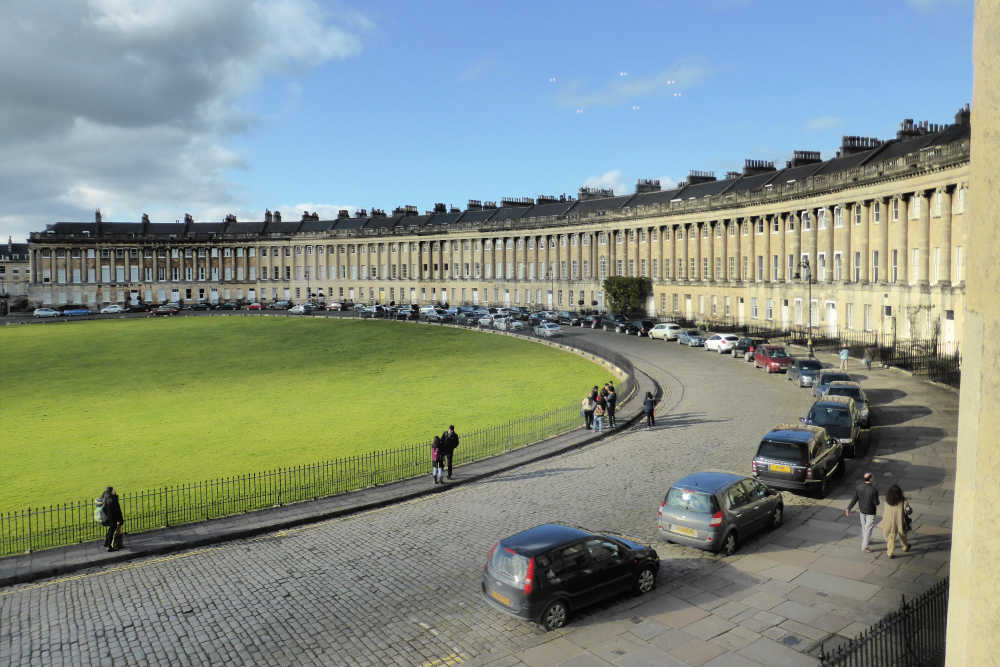
ADD TO YOUR BATH ITINERARY
Bath is most famous for the Roman Baths that the town is named for; heated from a natural spring with purported healing properties. The entire city was inscribed on the UNESCO World Heritage List in 1987 for its Roman remains and classic Georgian architecture. Visitors today can explore this compact elegant city and its many attractions.
- The free walking tour of Bath conducted by the Mayor of Bath’s Corps of Honorary Guides is easily the best value thing to do in Bath. Take a two-hour walk around this amazing UNESCO city with expert guides.
- With its stone depiction of Jacob’s Ladder on the west front, Bath Abbey is one of the most famous and beautiful things to see in Bath.
- The reason Bath is called Bath, the well-preserved Roman Baths are a must-see for visitors. Explore the baths and take a taste of the spa water which contains 43 different minerals.
- For a modern take on a Roman Bath, visit the Thermae Baths with their open-air rooftop pool filled and heated with the natural spring water the Romans would have used.
- Walk across the much-photographed Pulteney Bridge, though you won’t know you are on a bridge, as it has shops on both sides across the whole width of the bridge!
Want to save this for later? Click the Pinterest button on the left for a pinnable image!
RESOURCES | PLAN YOUR TRIP TO BATH
To book flights, rental cars, accommodations, and activities for your trip, please check out our recommended travel providers, favourite apps and websites.
Some of the links in the post above are affiliate links. This means if you click on the link and purchase the item, we will receive an affiliate commission but this does not affect the price to you. Please read our full disclosure policy here.
